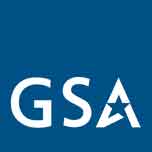Electronic documents like PDFs, editable document files (e.g., MS Word, Google Docs), spreadsheets, and presentations are frequently used for information and data sharing. Federal agencies are mandated by Section 508 of the Rehabilitation Act to ensure these documents are accessible to individuals with disabilities. Consequently, content authors must create electronic documents that are accessible to everyone.
Definitions
The Section 508 Standards define “document” as a “[l]ogically distinct assembly of content (such as a file, set of files, or streamed media) that: functions as a single entity rather than a collection; is not part of software; and does not include its own software to retrieve and present content for users. Examples of documents include, but are not limited to, letters, email messages, spreadsheets, presentations, podcasts, images, and movies.”
Section 508 standards apply to documents per E205.4 Accessibility Standard: Electronic content shall conform to Level A and Level AA Success Criteria and Conformance Requirements in WCAG 2.0 (incorporated by reference, see 702.10.1).
EXCEPTION: Non-Web documents shall not be required to conform to the following four WCAG 2.0 Success Criteria:
- 2.4.1 Bypass Blocks—A mechanism is available to bypass blocks of content that are repeated on multiple web pages,
- 2.4.5 Multiple Ways—More than one way is available to locate a web page within a set of web pages except where the web page is the result of, or a step in, a process,
- 3.2.3 Consistent Navigation—Navigational mechanisms that are repeated on multiple web pages within a set of web pages occur in the same relative order each time they are repeated, unless a change is initiated by the user, and
- 3.2.4 Consistent Identification—Components that have the same functionality within a set of web pages are identified consistently.
The E205.4.1 Word Substitution when Applying WCAG to Non-Web Documents states “For non-Web documents, wherever the term ‘Web page’ or ‘page’ appears in WCAG 2.2 Level A and AA Success Criteria and Conformance Requirements, the term ‘document’ shall be substituted for the terms ‘Web page’ and ‘page.’ In addition, in Success Criterion in 1.4.2, the phrase ‘in a document’ shall be substituted for the phrase “on a Web page.”
Applicability
Electronic content that is public facing must conform to the Section 508 Standards and the W3C Web Content Accessibility Guidelines (WCAG) 2.0 Level AA.
The Section 508 standards also include requirements for E205.3 Agency Official Communication: Electronic content that is not public facing shall conform to the accessibility requirements specified in E205.4 when such content constitutes official business and is communicated by an agency through one or more of the following:
- An emergency notification,
- An initial or final decision adjudicating an administrative claim or proceeding,
- An internal or external program or policy announcement,
- A notice of benefits, program eligibility, employment opportunity, or personnel action,
- A formal acknowledgment of receipt,
- A survey questionnaire,
- A template or form,
- Educational or training materials, or
- Intranet content designed as a Web page
Electronic documents include files created with common office software for content generation and information sharing, such as:
- Microsoft Word (DOCX) or Google Docs,
- Microsoft PowerPoint (PPTX) or Google Slides,
- Microsoft Excel (XLSX) or Google Sheets, and
- Portable Document Format (PDF).
Electronic documents may be included in other information and communication technology (ICT), such as a downloadable file on a web page, attachment in an email, or documentation included with a software application. Any publicly available electronic documents or agency official communication must be Section 508 conformant.
Examples
- A publicly posted federal agency memo in a Word document
- A PDF of an IRS-issued tax form
- A spreadsheet of data publicly posted on an agency website
- An onboarding presentation for new federal employees
- A PDF map explaining parking at a national park
- A meeting agenda or minutes for a public meeting held by a federal agency
- A newsletter about a federal agency product or program
- A standard operating procedure (SOP) for a federal agency customer service desk in a Word file
- A federal contract or grant document or template in a Word file or spreadsheet
- Fact sheets and brochures (PDF) on federal agency program offerings
Incorporate accessibility up-front and learn how to create accessible content and test it for conformance to Section 508.
Related Resources
- Create Accessible Video and Social Media
- Create Accessible Software and Websites
- Create Accessible Digital Products
- ICT Testing Baseline for Electronic Documents
- Test for Accessibility
- Tools for Testing Information and Communications Technology
Reviewed/Updated: August 2025


